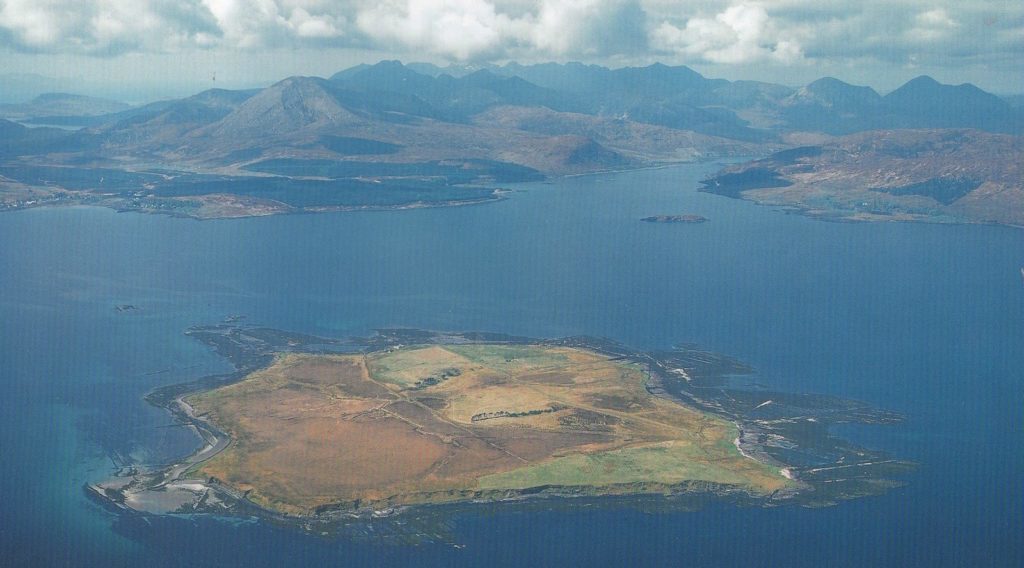As many of you reading this will know, the theme of this year’s CSCS program has been islands. In a Scottish context, islands have shaped Scotland’s culture and history for as long as there have been people here. While their influence on Scottish history has changed, especially over the course of the last 100 years, islands remain an integral part of Scottish identity. Thus, it was fitting for the penultimate seminar of the 2018/19 session to consider where islands lay within current historiography and what role they might play in the future. For this discussion, we were very fortunate to be joined by Hugh Andrew, founder and managing director of Birlinn Limited, and Professor Chris Whatley, Professor of Scottish History at the University of Dundee.

Andrew opened the discussion with a short paper on the challenges of writing island histories and the responsibilities of publishers overseeing such projects. Over the last decade there has been an explosion in the number of books published on islands, with Birlinn alone publishing dozens of histories, including books on Skye, Soay, Canna, Eigg, Mull, St Kilda, Islay, Jura and Colonsay. This remarkable expansion has been supported by a surge in public interest and academic support. In many ways, this success flies in the face of the difficulties involved in writing about Scottish islands. The greatest obstacle is simply the lack of source evidence. While many of the Scottish isles have proud and nationally important histories, many more have faded into obscurity, taking much of their history with them. This issue is solemnly manifested in the recent trend of allowing deserted islands to become ‘wilderness’ in an attempt to lure tourists back to these ‘forgotten’ places, often at the cost of abandoning what remained of the human experience on them. However, recent publications have taken this problem in their stride, with many adopting multi-disciplinary approaches to navigate areas where traditional sources are lacking. While there remain periods of historical dearth, these histories have shown just how far the study of island history has come. Many of the traditional histories of islands were written by “outsiders” looking in. Now, there are more and more histories being written using personal memories, family stories, folk tales and local knowledge, alongside archaeology, linguistics and historical analysis. Andrew concluded by expressing his hope that this will go some way to reverse the trend of viewing islands as peripheral or isolated, when in reality the histories of these islands can provide us with a different perspective on some of the biggest events in Scottish history, from the formation of the Kingdom of Scotland to the recent independence referendum.

Professor Whatley’s forthcoming book, Pabay: An Island Odyssey (Birlinn Limited)
Following on neatly from Andrew’s paper, Professor Whatley introduced his forthcoming book: Pabay: An Island Odyssey (Birlinn). Pabay lies Skye’s Inner Sound, in the shadow of its larger neighbour, Scalpay. The island – which draws its name from the Norwegian papa-ey meaning ‘island of priests’ – is 360 acres in size, predominantly flat, and home to some of the finest geological features in the country. While archaeological evidence suggests the island hosted prehistoric hunter-gatherers, the stone foundations of an early Christian chapel remain one of the isles’ few surviving testaments to human activity. You might then be forgiven for wondering why Professor Whatley, one of Scotland’s most prominent historians, has taken it upon himself to write a history of this small island. The answer to that question lies in a promise Whatley made to his aunt, and in the historiographical shift discussed by Hugh Andrew. Len and Margaret Whatley moved from the English Midlands to Pabay in 1950, living and working on the island until 1970. In that time, the Whatleys, including their young nephew (Chris), experienced first-hand the trials and tribulations of island life, which included devastating storms, sunk ships and logistical nightmares. Inspired by his family’s experience and having realised that he was one of the island’s few primary sources, Whatley wrote this book to “tell the story of Pabay”. Using traditional sources alongside his own memories, Whatley’s account highlights the themes discussed by Hugh Andrew and captures the changing nature of islands within Scottish history. Once Pabay was a strategic staging post of Clan Mackinnon, now, the isle has been deserted ever since the Whatley’s gave up on their island life in 1970. Whatley’s story is also testament to the importance of writing island history. Without books like Whatley’s, we risk losing what little remains of this islands’ historical legacy.
Andrew’s and Whatley’s papers remind us of the tectonic shift which Scotland’s islands have experienced. Much of the discussion which followed on from these papers focused on the future of the Scottish isles. In an age of island depopulation and economic hardship, the general public’s growing appetite for island history may seem like a cruel irony. However, it is somewhat comforting to know that, whatever the future holds for Scotland’s islands, the study of their past goes from strength to strength, safeguarding their legacy for future generations.
Professor Whatley’s forthcoming book, Pabay: An Island Odyssey, will be published on 11 July 2019. You can pre-order a copy on the Birlinn Limited website: https://www.birlinn.co.uk/Pabay.html.
Our final seminar of the 2018/19 session will take place on 14 May, when we will be joined by Linden Bicket (Edinburgh) who will discuss ‘”Rhythms and Images and Legends are Everywhere”: George Mackay Brown’s Orkney’.


Hi there,
My name is Alastair Jackson, a photographer originally from Dunvegan on Skye. Just this year myself and Kenneth Steven published a poetry/photography book inspired by the work of Sorley MacLean. All my images were made in Skye and Raasay. I’m now expanding the geographical spread across as many islands around Skye as I can. I would love to interview Christopher and get across to photograph Pabay as part of this new book project and I wondered if you would be kind enough to either put me in touch with him or forward my message on. Many thanks. Alastair